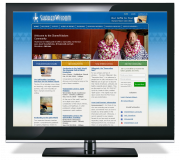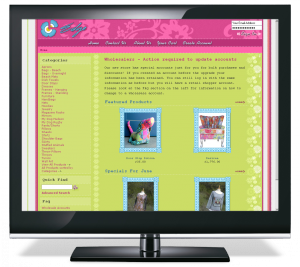Next Steps
Cascading Style Sheets (CSS)
Cascading Style Sheets (CSS) are employed in all our online projects to control the look and formatting of the design. CSS styling separates the document content from the presentation which improves accessibility, ensures formatting consistency throughout the project, and reduces the complexity of content input when Content Management Systems (CMS) are used.
Enchanced accessibilty<
The separation of content from presentation allows us to create multiple CSS files to control the appearance of content so that it displayed appropriately for different media types. The content is defined once and the different style sheets change the appearance when the page is rendered. For a web page this typically includes one set for normal screen display, another for print display, and possibly others for mobile devices and screen readers for the visually impaired. With the advent of multiple internet browsers and media devices the need for CSS substantially grown.
Bugs and quirks<
In an ideal world CSS would appear the same in all media devices. Of course reality is rarely ideal and flaws in browser design often interfere with the proper display of content. These quirks must be fixed for browser in question, but many times the solution causes more problems. Coda actively maintains its knowledge of browser quirks so that our designs appear consistently across all the platforms without introducing new issues.
Need for speed
<
Many people assume that everyone has high speed internet so there is not much point to optimizing CSS code. Whilst its true that most US household have high speed access they also have a low level of patience for page load times. Most website do not show load progress, and browsers often guess wrong with their progress bars, leaving viewers ready to click away after a few second if a page has not loaded. Coda understands the need for speed and optimizes images and code using the optimal methods to make sure page load quickly before the viewer can click away.
Going on the road
<
So you just picked up a cool new phone that lets you browse the web. You try it out on your web site. It takes ages to load, it looks wrong, and you can't browse it because the screen is too small or some fancy navigation does not work. Coda creates sites that automatically detect the device being used, and can completely change the appearance and layout of the content, to optimally display and operate no matter where you are.
That's not the whole story
<
Bandwidth is only part of the equation: there's page rendering time too. Once the code is trasmitted from the web server to the viewers computer, it is rendered visually by the browser, which uses memory and processing power on the viewers computer. Poorly written CSS can cause the viewers computer to take a long time to show the page, slow down when scrolling or navigating the site, and even cause lock ups. Coda uses the latest technologies to asses render times and optimize code.









